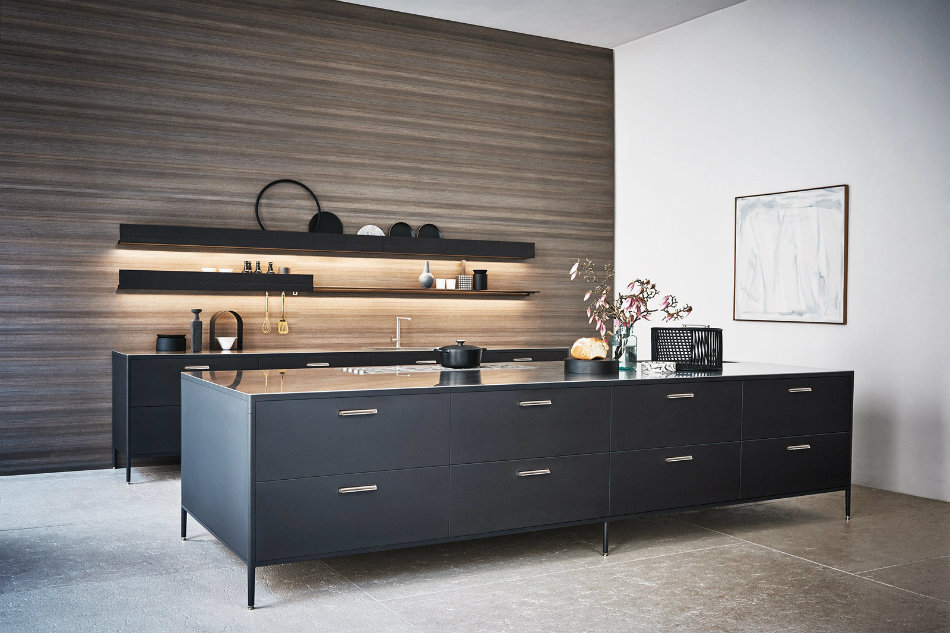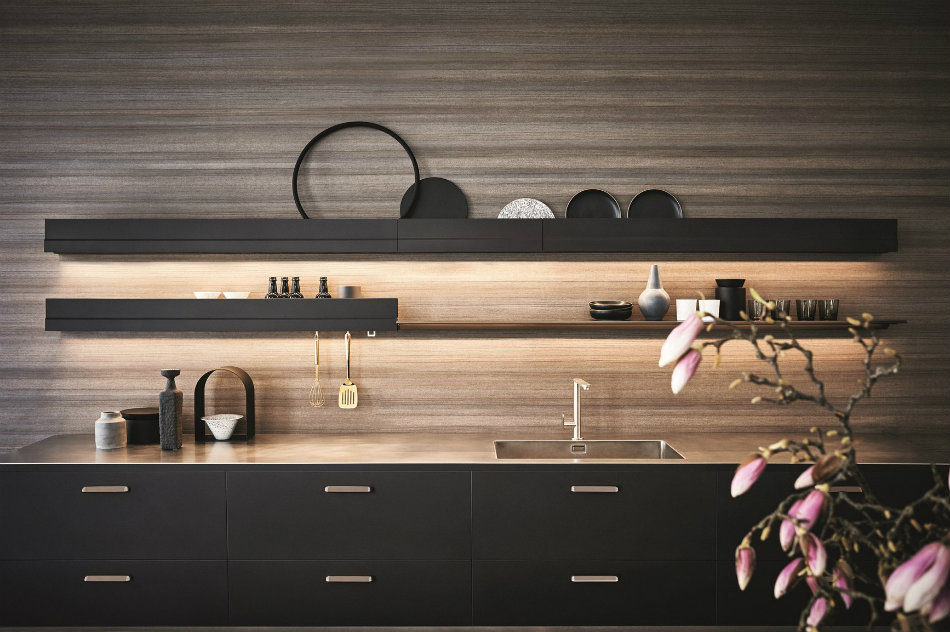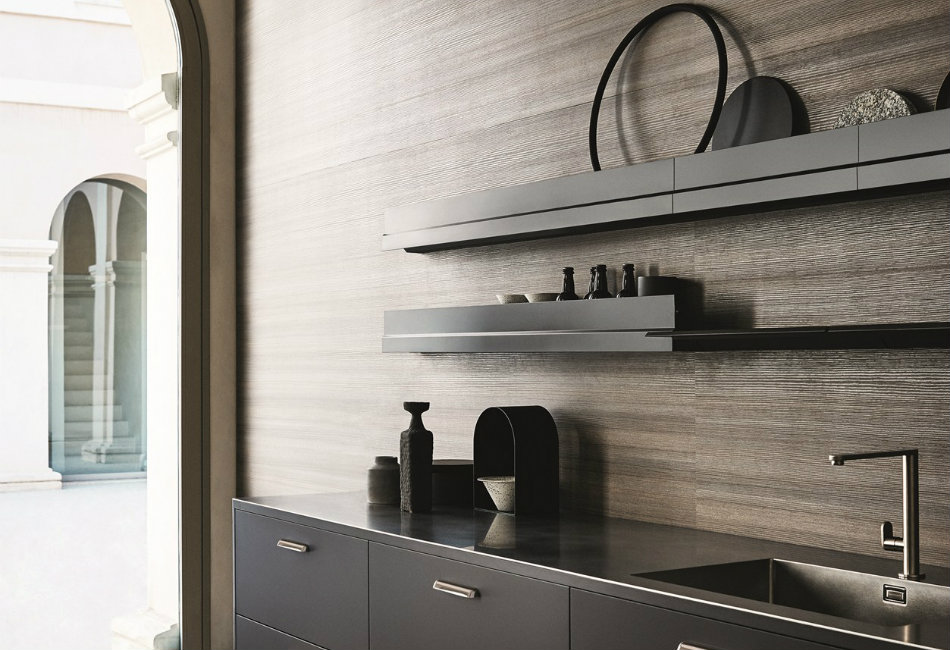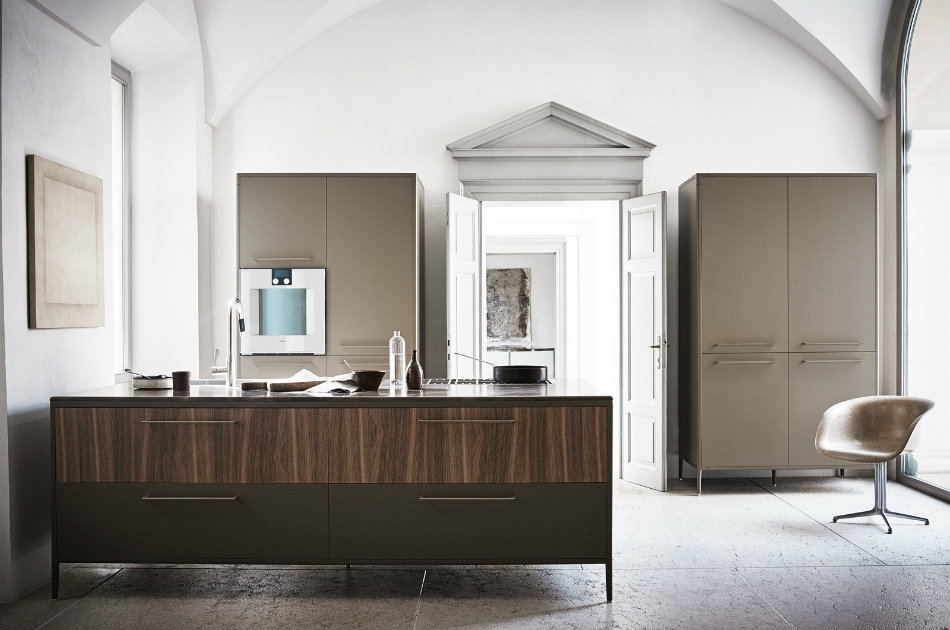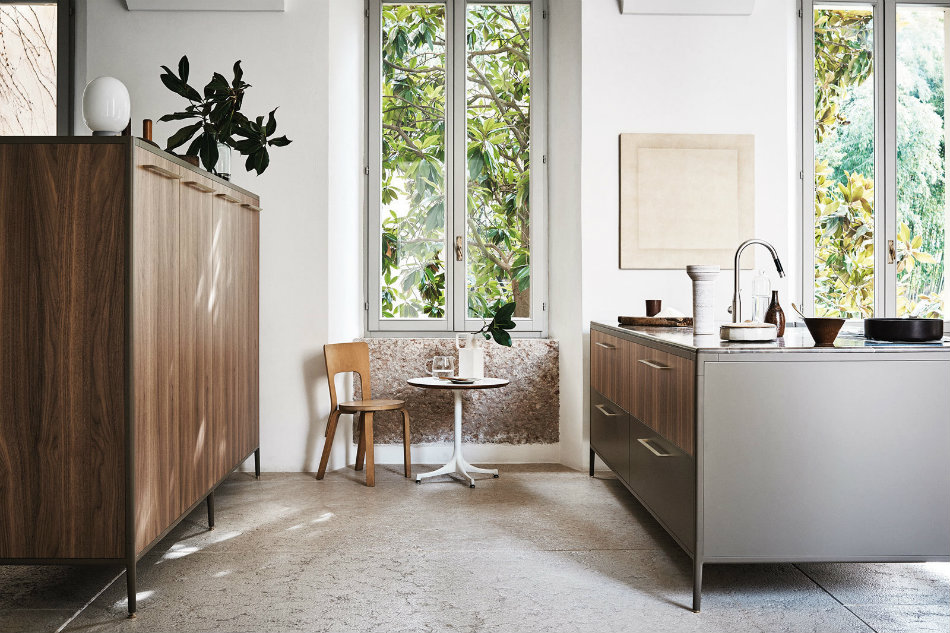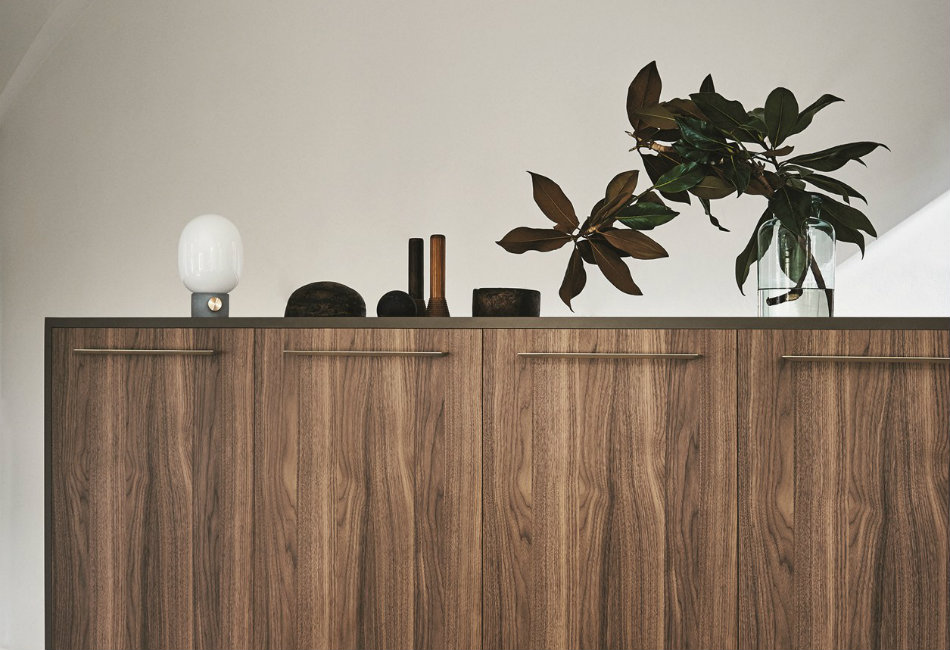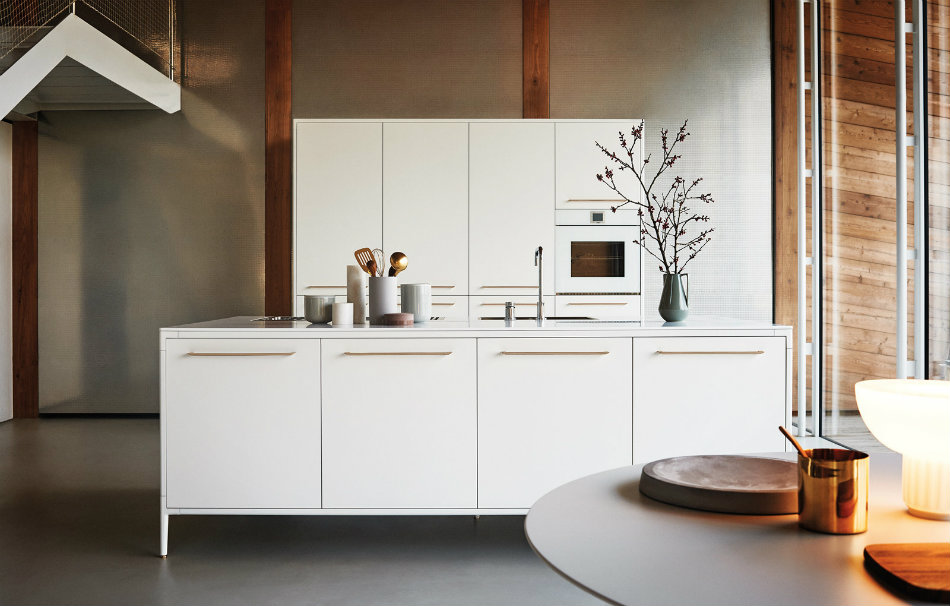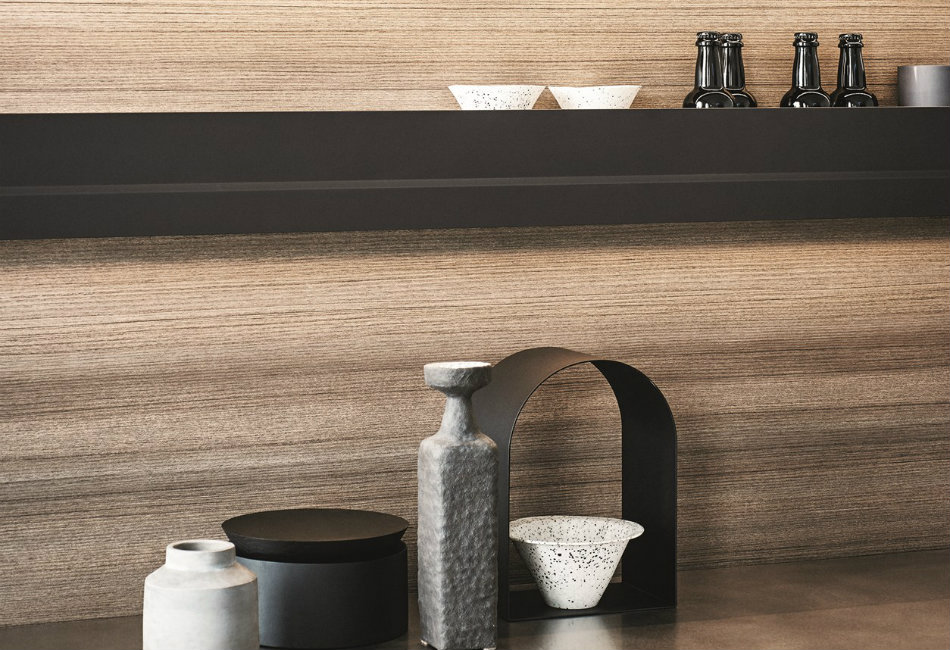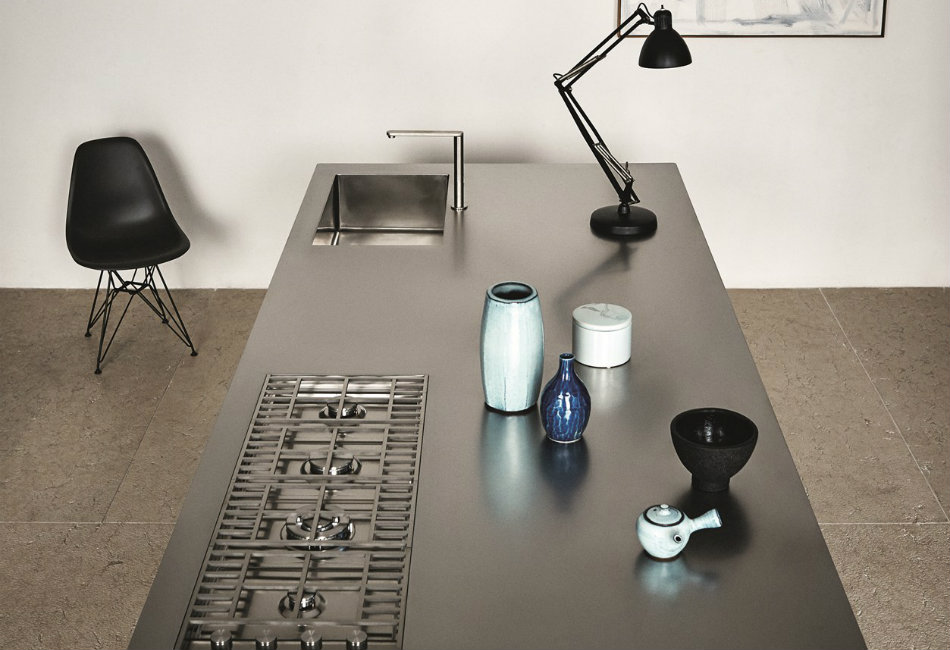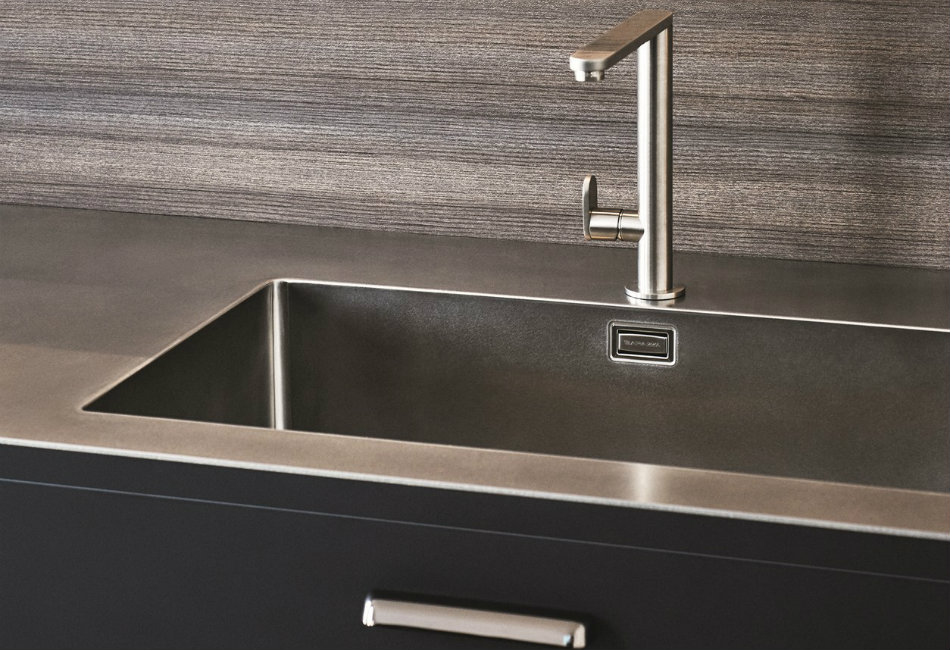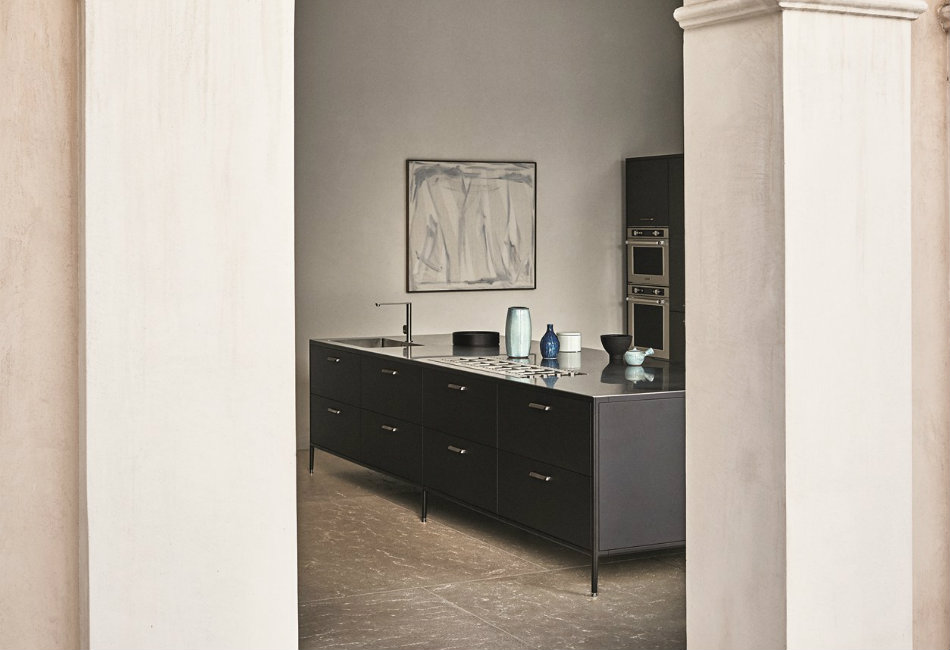The design of kitchens for the last 20 years seems to have focused primarily on two styles reflecting two opposite poles: classical or country versus contemporary or industrial. It's become very difficult today to find real alternatives, contemporary designs able to make a kitchen look non-obvious and original. That said, there are options, one of which happens to a newly revamped Italian company. Cesar carries nearly 50 years of history in the kitchen sector. Gina Cester, Cesar's CEO, is determined to define the next chapter, and has called upon the support of Garcia Cumini's design studio—the newly appointed artistic directors of Cesar.
The first project designed entirely by Vicente Garcia and Cinzia Cumini is Unit—a system that wants to shift the idea of a kitchen as a fixed object to that of a concept with free elements. During a recent meeting, Garcia and Cumini told us about their new work, starting with their relationship to both the industrial and the domestic kitchen. “The Bauhaus movement," Garcia explains, "was a pioneer in defining functions, even for this area of the home. It triggered the basic principles of modularity. Since then, many things have changed, but the kitchen remains a very technical space, even though it’s an emotional and special area. In the last decades the offer from kitchen manufacturers was centered on that—technical and material aspects—but the formal side has been linked mainly to modularity and design of cabinet doors. This happened for so long that sometimes it's hard to see the differences between kitchens from different manufacturers.”
Unit is designed to meet this need. “The objective of Unit is to connect the practicality and ergonomics of the professional kitchen with the humanity of the home kitchen," Cumini continues. "With our research, we tried to carry the product in a freer design dimension, where the kitchen becomes a single object—such as a table or chair, and no longer an object tied to the size of one single space, or a space designed to measure from wall to wall.”
To achieve this goal the technical choices the duo made were very important. “From an ergonomic point of view," Cumini shares, "it allows a more comfortable position while you cook because you can put your feet under the containment volume. Research and development at Cesar has allowed the creation of Unit in such a way that frees 2.4 meters of floor space." This allows occupants the ability to move freely while cooking, without being impeded by their own appliances. Further, "the internal construction has been engineered so completely different from the rest of the kitchens on the market—combining lightweight materials that do not belong to the world of cooking, with traditional materials in this field. As it happens, for example, in the automotive industry when different metals are used in different parts of the chassis depending on their function.”
From an aesthetic standpoint, it is the handles and the materials that compose them which seem very different from the standards to which we are accustomed. “We wanted to bring back the handle as a functional element but also as a decoration," Garcia adds. "For these reasons we designed two handles for Unit with two completely different personalities, in five finishes. Shell is a handle with a compact size that has been inspired by the classic recessed handles of country kitchens. Eero, instead, has been designed around the idea of realizing a bridge handle. Also the adjustable feet are small functional details that we wanted to become graphic elements.”
“The materials and the colors are also a very important point in this project, because it is that which gives human touch and bring the flavor of the professional kitchen at home," Garcia explains. "When you imagine a professional kitchen you always think of the practicality of stainless steel, but we also wanted an object that would give warmth and cheer or simply be able to express the taste of the people, not just another finish. [We have therefore chosen] wood, mortar, steel, rolled products, magnetic lacquer—coordinated to Amani and Carrara marbles, slate, Piacenza stone, steel, ceramic and Corian.” All of this lends the kitchen something beyond what we've come to expect.
Another addition to the Garcia Cumini line for Cesar is the Wall Waiter: a vertical system that was designed as a horizontal kitchen top. Here classic—albeit lit up—shelves can become containers since they can be folded up to hide objects. As a simple yet clever solution to the stagnation of the kitchen, anyone who lives and uses such a room will surely appreciate what the brand has done to shed new light.
